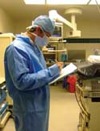Ethnographic research in medical device development
The use of ethnographic research has since become much more common in medical device development. However, its relative ubiquity raises an important issue: How can ethnographic research achieve validity? By validity, I mean the degree to which the research findings accurately describe the real-world facts that they purport to describe.
The issue of validity does not always apply to ethnographic research, at least not to all research to which the term ethnographic is applied. Much so-called ethnographic research—perhaps most of it—is designed simply to generate ideas, that is, to stimulate creativity. Inevitably, when members of device-design teams go into the field and see directly how their devices and other devices are used, it generates insight and stimulates new ideas. This is certainly a reasonable and productive purpose for field research.
However, there is another, perhaps more ambitious, purpose to which ethnographic research can be applied—to guide business decisions regarding new product development, e.g., to determine what new devices are needed, what characteristics new devices should have, and so on. What “guiding business decisions†amounts to, of course, is providing information to determine how millions, or tens of millions, or even hundreds of millions of R&D dollars can be most productively spent.




